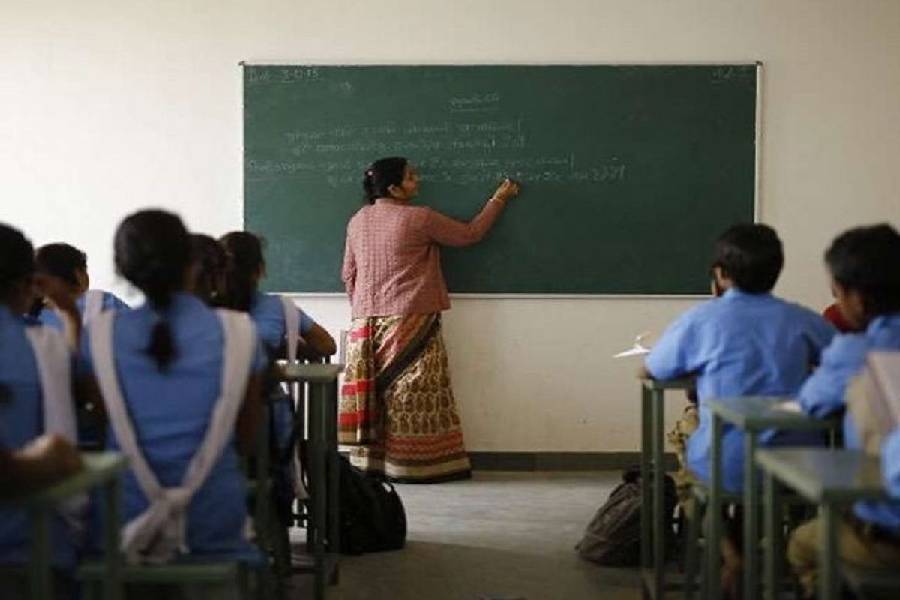The concept of backbencher is not a complimentary one. In practical terms, children sitting in the last couple of rows in the classroom feel distant from the teacher and strain to see the blackboard. They may feel bored and become inattentive, or simply feel excluded. But ‘backbencher’ is also used metaphorically, for children who are disinterested or mischievous choose the last rows deliberately so as not to be under the eye of the teacher. Or it might also mean those children who find it difficult to keep up with the rest of the class and do poorly in examinations. There is, in people’s minds, an unconscious division between ‘frontbencher’ and ‘backbencher’. It is to do away with this division both in perception and in reality that Barlow Girls’ High School in Englishbazar, Malda has taken the unconventional step of seating all children in a semi-circle instead of in rows. The idea comes from a Malayalam children’s film and has been taken up initially as an experiment in one class and three subjects.
The school was prompted by certain state officials to start the experiment. Apparently, some schools in Kerala too are trying this arrangement since the Malayalam film questioned the difference between backbencher and frontbencher. The school in Malda has had a satisfactory response from the children who are now equidistant from the teacher and can make eye contact with her and ask her questions. This has been a thrill for the children too. They are all participating more and everyone feels included. The ‘No Backbencher Model’ is an inclusive, interactive model and would create a vibrant classroom. This is one of the basic needs of classroom teaching. The sense of equality gives children confidence. It also creates a bond between the teacher and each student. That, too, is especially important for education to be meaningful. Other schools in Malda are being encouraged to try this model.
It is somewhat amazing what a simple change in seating arrangements can mean for education. But a lively, interested group of students is not enough for a fruitful interchange. Teachers, too, will have to adjust to the new way of seating. They must take care to look at each student and include all in their discussions. What is promising is that increased questions from students might prompt teachers to evolve fresh methods of teaching. The interest children show must be kept alive. In general, too, care needs to be taken to encourage effort, not excellence alone. That will give the weaker students the confidence to keep trying. Interaction in the classroom should also help students discover their special interests and talents. One unavoidable necessity would be sizeable classrooms. Seating children in any circular arrangement needs space. One drawback of schools is often the lack of space. Even then, other arrangements can be formulated. The change in seating arrangement is too promising to be jettisoned.










